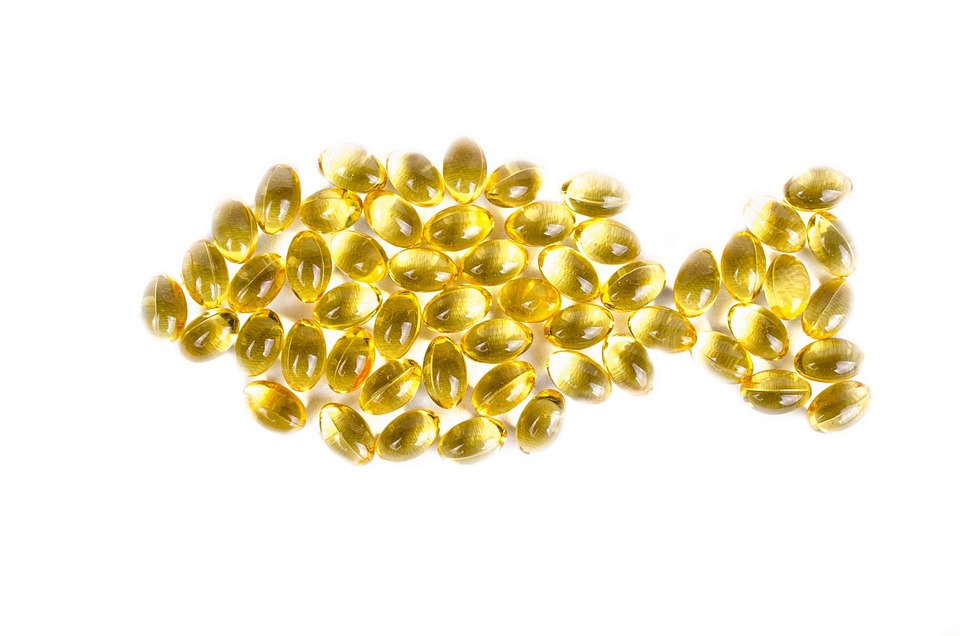Oil that is extracted from the bodies of fish is called fish oil. Since the 1970s, fish oil supplements have become more popular after research from Denmark showed that people who ate diets rich in fish had less heart disease. Ever since researchers discovered that people who eat a lot of fish have lower rates of heart disease, there has been a lot of interest in fish oil as a potential way to reduce heart disease. This research has shown that the omega-3 fatty acids in fish oil, especially EPA and DHA, are responsible for most of the heart-healthy benefits of fish oil. Throughout history, cod liver oil has been used as a remedy for many different conditions in Europe. Today, fish oil products have replaced it.
In the 18th century, people often threw fish livers and gallbladders in buckets and left them to ferment. After a while, people started using this oil to relieve pain, cure rickets and gout, and even treat tuberculosis. The greasy, yellow liquid that cod liver oil is notorious for is actually full of nutrients like vitamins A and D. It was the observed effects on rickets that led to the discovery and isolation of vitamin D. The biggest criticism of cod liver oil in the past was that it tasted terrible. Some people may have had to take cod liver oil when they were younger. The problem of fish oil tasting bad has been mostly solved through improved processing, the addition of flavors, and the reduced use of fermented oil thanks to refrigeration.
How Is It Made?
The oil in fish can come from one or several different kinds of fish. There are many products on the market that are made from the body oil of different fish, such as herring, sardines, mackerel, anchovy, salmon, or cod. Although they are not fish, there are oils made from squid and green-lipped mussels that are similar to fish oil. While larger fish such as tuna, swordfish, and sharks do contain omega 3s, they tend to be more expensive. The fish higher up on the food chain tend to live much longer, and as a result, their body oil contains heavy metals and other contaminants that have accumulated from the smaller fish they eat. Heavy metal content in fish oil is minimal because there are methods used to ensure that it is minimal. These fish are not the source of fish oil very often, but even the smaller fish are monitored so that the products are safe.
Companies will only be able to sell supplements if they follow Good Manufacturing Practices. The FDA has set maximum levels of heavy metals and other contaminants that are allowed in food items. A few companies go to great lengths to make sure their fish oil products contain very few heavy metals. If you want to make sure that a fish oil supplement is safe and authentic, look for certification from third-party organizations such as NSF and USP or from fish oil-specific standards such as the International Fish Oil Standard (IFOS). There are various methods that can help to reduce the level of heavy metals in fish oil products, as well as limit the oil’s exposure to oxygen. If fish oil is left in the open air, it will go rancid, like any oil. This is done to prevent oxidation by capping the bottles of liquid fish oil with nitrogen gas during the manufacturing process. Encapsulating fish oil in capsules instead of leaving it as a liquid is another way to prevent oxidation of the oil. This means that you can take them with you on the go and don’t have to worry about them going bad. Since capsules don’t need to be refrigerated, you can take them with you and don’t have to worry about them going bad.
How Does it Work?
The EPA and DHA inhibit the COX enzyme non-selectively, similar to how NSAID medications like aspirin or ibuprofen work. This is because they are able to reduce inflammation in the body. Patients who take a fish oil supplement in addition to NSAIDs are often able to reduce their NSAID usage. This combination reduces the patient’s risk of experiencing negative side effects commonly related to NSAIDs. One common misconception is that all omega-3 fatty acids can be easily interchanged, but it’s not that easy. If someone does not want to eat fish, or is unable to, flaxseed oil is an option to get omega-3s. There is a big difference in the way that alpha-linolenic acid (ALA) in flax is structured compared to EPA and DHA (the prominent fatty acids in fish oil).
How Can Fish Oil Help?
There is a lot of research on the benefits of fish oil for conditions like mild to moderate depression, cardiovascular disease, and various autoimmune and inflammatory conditions. Fish oils can make your skin appear shiny and healthy. Fish oil has been used to improve skin and hair conditions by supplying important omega-3 fats to the body, skin, and hair. This makes the skin and hair stronger and gives it more luster. The omega-3 fatty acids found in fish oil help cells in our bodies move more efficiently. This means that they can travel more easily through your body, penetrating cell membranes to deliver their benefits. Polyunsaturated fatty acids, EPA and DHA, are “slippery” and can travel through your body easily to deliver benefits. Omega-3s are found in cell membranes, which makes them more flexible and elastic. This can help improve the function and growth of the brain, blood vessels, skin, and hair.
Are There Side Effects?
Fish oil has many positive brain, heart health, and anti-inflammatory effects. The majority of these effects are due to the fact that fish oil thins the blood and makes blood vessels less stiff. Making your blood thinner can have some benefits for your health in the long term, such as reducing your risk of developing cardiovascular diseases and cognitive diseases. However, thinning your blood can also sometimes make it take longer for your blood to clot. This is important for patients who are taking blood thinners, have genetic bleeding conditions, play contact sports, or are going to have surgery or go to the dentist. Be sure to inform your doctor, dentist, or surgeon if you take a fish oil supplement or any other kind of supplement. Even though supplements are normally safe to take, it’s important for healthcare practitioners to be aware of any supplements you’re taking. This way, they can have all the necessary information and help you achieve optimal health. The risk of bleeding is most commonly linked to fish oil supplements of omega-3 because it contains higher levels of EPA and DHA. Other omega-3 products that have a lower dose of EPA/DHA are flaxseed, squid, and krill oil, and as a result, have a lower risk of bleeding.
Are Fish Oil Supplements Beneficial for Kids?
Fish that are high in fat content, such as salmon, tuna, mackerel, herring, and sardines, contain high levels of EPA and DHA omega-3 fats. These fats have been shown through research to be beneficial for overall health. If your kids don’t eat fish, you may wonder if they can get enough omega-3s from plant foods. Other foods that are high in omega-3 fats are walnuts, flax, canola oil, soy, and chia seeds. Although the plant-based omega-3s are in a form known as ALA, it is not as easy to convert it into the forms of EPA and DHA.
It’s a good idea to make sure your kid eats fatty fish or takes supplements with DHA and EPA. Those who may benefit from a fish oil supplement include:
” Manaker suggests that it may take a little exposure for children to accept fish due to the unique taste. If your kids are reluctant to eat fish, try adding it to familiar foods like mac and cheese. If they still don’t eat fish regularly, talk to a healthcare provider about adding a fish oil supplement.
There is some research that suggests that omega-3 fatty acids from either fish or plant sources may help improve symptoms in children with ADHD. It may be beneficial to consult with your healthcare provider if your child has this diagnosis.
Children with asthma or a family history of asthma may benefit from consuming fish regularly. Early introduction of fish (between 6-9 months of age) in addition to regular fish consumption (at least 1 time per week), has been shown to reduce asthma symptoms in children as they grow. Although these studies only looked at fish consumption, it might be a good idea to ask a pediatric healthcare provider if a fish oil supplement would be beneficial for children with asthma who don’t eat fish regularly.
There is a growing amount of scientific evidence that suggests that taking omega-3 fatty acids may improve the quality of life and mental health status in children who have emotional and behavioral disorders. There is some research on this topic, but the studies are small. Dosing also varied from study to study. More research needs to be done, specifically in children. Discussing the pros and cons of omega-3 supplementation with a healthcare provider is a good idea if your child struggles with behavior or a mood disorder.
The 6 Best Fish Oil for Kids In 2022
Best Overall: Nordic Naturals Children’s DHA
Nordic Naturals Children’s DHA liquid is the best overall pick because it provides 530 milligrams of omega-3s in just ½ teaspoon. The dosage of medicine can be easily adjusted for children ages one to six.
This children’s DHA supplement is made with arctic cod liver oil in triglyceride form to allow for better absorption. Nordic Naturals uses only non-GMO ingredients that have been third-party tested. For any product that you purchase, you can always request to see the Certificate of Analysis, which will detail all of the tests that were performed on that product.
Best Budget: Barlean’s Omega Pals Chirpin’ Slurpin’ Lemonade
This fish oil provides 750 mg of omega-3s in a serving size of 1 ½ teaspoon. This includes 455 mg of EPA, 295 mg of DHA, and 185 mg of other omega-3 fatty acids. The texture of this food is more like a smoothie than an oil, so your kid may want to eat it straight from the spoon, or you can mix it into yogurt, oatmeal, or applesauce.
The brand Barlean’s prefers to use oil sourced from small-bodied fish, such as anchovy and sardine. This is because fish of this size typically have a much lower incidence of exposure to heavy metals like mercury. Barleans pays close attention to quality control, following NSF Good Manufacturing principles. Every product they make is third-party tested. Their Barleans “Look It Up” program verifies this.
Best Liquid: Carlson Kid’s Norwegian The Very Finest Fish Oil Omega 3s
Carlson Kids The Very Finest Fish Oil is a great way to get your omega-3s. With 800 milligrams of omega-3s (400 milligrams of EPA and 250 milligrams of DHA) in just a ½ teaspoon serving, it’s an easy and delicious way to get your daily dose. There are three options for flavors, so you are sure to find one your child likes. This fish oil supplement contains a significant amount of vitamin E, which is beneficial for children of all ages. It is important to make sure your child does not exceed their daily supplement needs if they are taking other supplements.
Best Chewable: Nordic Naturals Children’s DHA Chewable Soft Gels
If you’re looking for a chewable option for your child, Nordic Naturals Children’s DHA is a great choice. Each chewable softgel provides your child with 636 milligrams of omega-3s, with 165 milligrams coming from EPA, 375 milligrams from DHA, and 96 milligrams from other omega-3s. Your child will not be able to take this supplement unless they can chew and swallow softgels comfortably.
Best Vegan: Garden of Life Plant Omega-3 Liquid
If you’re looking for a vegan option to help meet the omega-3 needs of your little one, go for Garden of Life Kids Plant Omega-3. This supplement provides 880 mg of omega-3 fatty acids in 2.5 ml, including 100 mg of EPA, 265 mg of DHA and 500 mg of ALA. If you’re child is not getting enough omega-3 fatty acids in their diet, this can be a problem.
Best Multi with Fish Oil: SmartyPants Kids Formula Daily Gummy Multivitamin
If you want a single product to help your child with their vitamin, mineral, and fish oil needs, then the SmartyPants Kids Formula is the way to go. This product also has added omega-3s. In 4 gummies, your child will be getting: – 100 milligrams of omega-3s – 15 essential nutrients, including vitamins A, D, C, E, K, folate, choline, zinc, and B12.
This supplement contains a low amount of omega-3 when compared to the recommended amount of 900 milligrams of ALA for 4 to 8-year-olds. You should focus on giving your child omega-3 foods throughout the day, even if you are giving them this supplement as a way to get a multivitamin and omega-3s. If you have a child who eats fish but needs more omega-3s, this may be a good solution.







